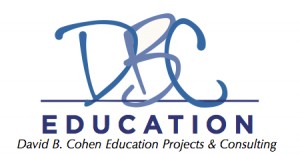In addition to blog posts at this site, I am a regular contributor to EdWeek Teacher, where I have a blog titled Road Trips in Education. Here are a few excerpts from my most recent posts, and an invitation to click through to EdWeek.org to read more – just click on any title!
Why Employers Care What Workers Want (2/11/15)
How many times have we heard that the problem with disappointing teacher performance is that we have no incentive to succeed? No competition driving us. Not enough pressure. We’re often told that if we were employed in “the real world” then we’d have to adapt to those kinds of conditions.
Newsflash: in the real world, the workplace sometimes adapts to the worker. Writing in the the Wall Street Journal (2/5/15), Lauren Weber reports that companies in search of salespeople are finding that new hires value stability and teamwork over competition and risk. And even in sales, they don’t like it when “success boils down to a number.” Sort of like teachers.
Businesses are mindful that they need to create working conditions that improve recruitment and retention, not just because it might help organizational culture but because it affects the bottom line: “The time spent bringing new reps up to speed means the company doesn’t see the full benefit of their productivity until 12 to 18 months into their tenure.” In American schools, poor working conditions are a leading cause of teacher turnover, a problem that costs billions of dollars per year. There are proposals for reducing turnover and improving teacher support, but they need to gain more traction.
Salespeople are often perceived as individualists; being paid on commission provides the incentive to compete, to work hard, do whatever it takes to make the sale and close the deal. But times are changing for certain types of companies, according to Weber: “Sales organizations today are more commonly structured as teams, with lower-ranking members identifying prospects and developing early interest, someone else running through the specs or demos on highly technical products, and field reps negotiating and closing deals, employers say.”
The article goes on to suggest that, as a result of those changes, business recruiters are downplaying competition and the chance to earn big commissions when they talk to potential hires. Weber quotes Sharon Prosser, group vice president of Oracle Direct, who says that recruiting efforts are more effective when they mention that sales jobs are suitable for “continuous learners and that there’s training and career progression built into the program.” I think teachers want the same opportunities, but those pushing “business” solutions for education are rarely focused on promoting continuous learning and career progression.
Making a Teacher of the Year (2/20/15)
What does it mean to be Teacher of the Year? Is it a mark of great professional distinction, or of personal ambition? Is it evidence of outstanding accomplishment, or popularity and political connections? I’ve had the pleasure of knowing and working with some Teachers of the Year, and in my travels around California this year, I’ve spent full days observing and talking to many district, county, and state Teachers of the Year. Their classroom practices have all been impressive, but what makes them stand out compared to other teachers is not pedagogy. There are plenty of excellent practitioners, but these individuals share something else in common that’s important to recognize and cultivate.
The key difference is the shared drive to engage beyond the classroom. For some, that drive leads them writing, publishing, speaking, and training opportunities – a set of activities that appears to be about broadcasting one’s own work and ideas, but also entails hearing from others regularly. Putting yourself and your practice out into the public sphere generates a healthy pressure towards self-analysis, reflective practice, and continual learning.
For other Teachers of the Year, extending their professional life beyond the classroom means taking on leadership and advocacy roles. The National Network of State Teachers of the Year has gained traction on many fronts in the past few years. Several of these individuals have participated in Teach to Lead, a national program advocating expanded teacher leadership. It’s hardly a new concept, but the effort to grow and sustain leadership roles may be gaining momentum not only in national conversations, but also in the form of more opportunities being created in districts, counties, states (New Mexico, Tennessee, Iowa, among others).
Promoting Serendipity in Education Policy (3/1/15)
I recently attended a talk at the Stanford Graduate School of Education, given by Lee Shulman, professor emeritus, and president emeritus of the Carnegie Foundation for the Advancement of Teaching. Shulman was one of my instructors when I completed my master’s degree at Stanford twenty years ago, and we’ve kept in touch over the years, so I would gladly attend any talk he’s giving. This one had an intriguing title that offered a little extra incentive for me to go: Serendipity Policy in Education; Opportunity Is Not Enough.
Based on casual use of the word serendipity, I was curious to see what Shulman might suggest about education policy that goes beyond opportunity to promote pleasant, unexpected discoveries. What I learned had more to do with the sagacity of serendipity, the idea that these surprises in learning and innovation depend on prior knowledge and wisdom in order to capitalize on the accidental.
Shulman offered the well-known example of Louis Pasteur’s discovery of the principles behind vaccinations and acquired immunity, which came about through a mistaken lab procedure. To those who might argue that the discovery was more luck than genius, Pasteur responded “In the fields of observation chance favors only the prepared mind.” As Shulman presented the idea of education policy that favors serendipity, he made it clear, and I would reiterate, that it’s not a question of random pleasant surprises, but rather, cultivating both knowledge and the circumstances that lead to unexpected and innovative application of that knowledge.
The central question Shulman raised is this: if opportunity policy is about removing impediments to a well-designed educational experience, what would serendipity policy look like? Can we craft policy that recognizes and supports a need to prepare people to respond to chance, accident, the unpredictable and uncertain? There’s a tension there that Shulman has wrestled with directly in his career: when he used to teach the concept of evaluation, there was a challenge to anticipate and account for the unpredictable in teaching.
It’s more than a matter of academic curiosity; Shulman cited research done on medical decision-making that revealed expert practitioners are not those who make the fewest mistakes, but rather, those who recognize and correct mistakes most quickly and effectively. The implications for teachers and for students are that complex and dynamic situations will put everyone in situations requiring decisions based on always varying circumstances. Learning to navigate the unknown and still reach successful outcomes necessarily involves making and correcting some mistakes along the way. How can we foster circumstances that allow serendipity to work, where people have the sagacity needed to turn accident into discovery?



